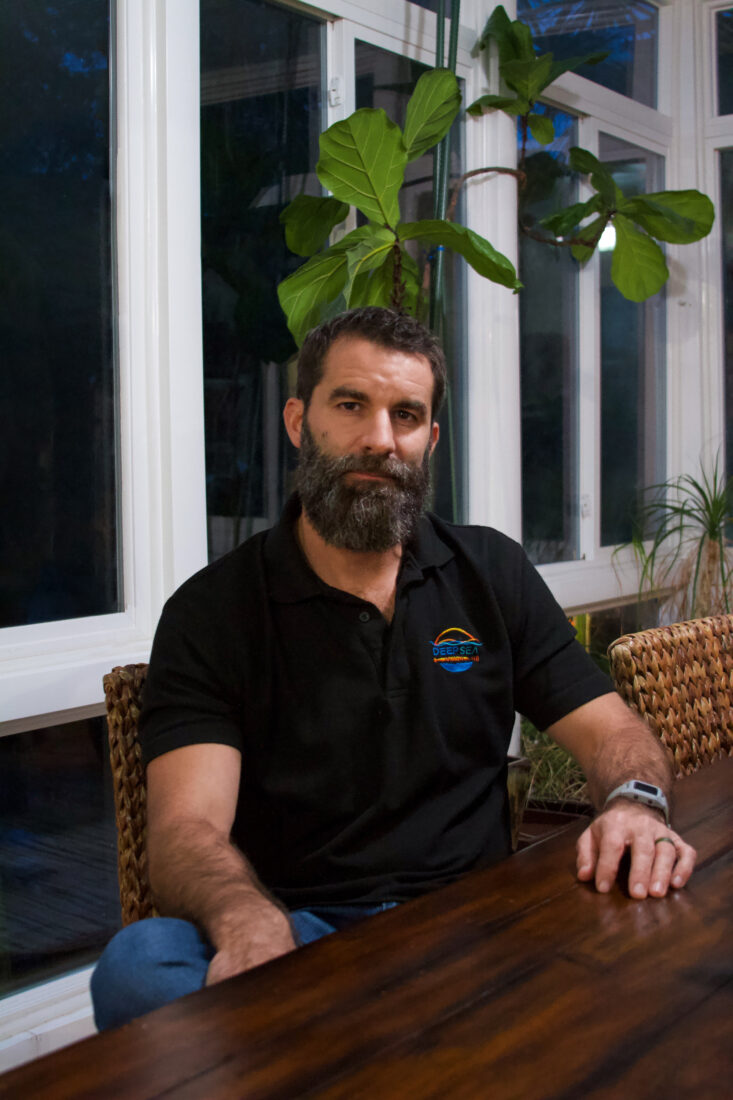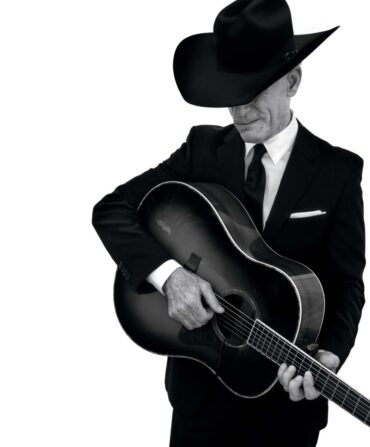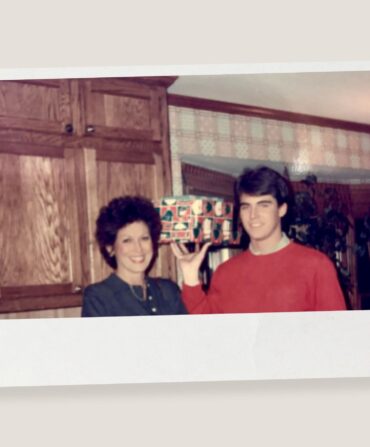“Amelia Earhart is America’s favorite missing person,” says Tony Romeo of Deep Sea Vision, the underwater exploration company that recently completed its first search for the aviator’s long-lost aircraft. On July 2, 1937, as Earhart was attempting to become the first woman to fly around the world, she lost communication with the tiny strip of earth in the Pacific, Howland Island, where she was supposed to land to refuel. She and her navigator, Fred Noonan, were never heard from again, and no trace of her Lockheed 10-E Electra ever surfaced—until, possibly, now.

Last year, Romeo founded a deep-sea exploration company and used his own dime to put together a streamlined expedition to solve the mystery, which has captured imaginations for generations. For a price tag of two million dollars, a crew of sixteen spent over three months on a boat stretching just over a hundred feet long, scanning 5,200 square miles of ocean floor around Howland with sonar technology. Last month, they shared an image that rocked the news cycle and launched a controversy: a fuzzy outline of what appears to be a plane with similarities to Earhart’s aircraft.
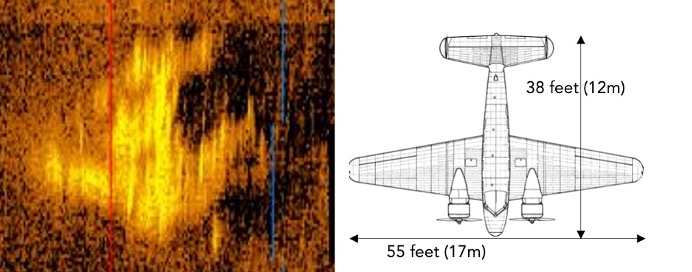
Below, we caught up with Romeo, who lives in Charleston, South Carolina, to learn why he’s so fascinated by Earhart, what the expedition was like, and what’s next for the team.
First of all, I saw that you live here in Charleston!
I’m from Seattle originally. I had a buddy who was stationed in Charleston; he told me to come and check out the area, and I did, and I fell in love with it. I came back out eventually to do some commercial real estate investments. And then I went to the Charleston School of Law, met my wife, and had a couple kids. We live out on Sullivan’s Island now.
Besides commercial real estate and law, you’re also a pilot?
I’m a private pilot, but I didn’t want to do it as a career. I went to the Air Force Academy and the idea is to be a pilot—that’s why most folks go there. Right at the end, I changed my mind and said, I don’t want to fly anymore. So I ended up becoming an intel officer. And that was an interesting career as well. When I decided to get out of commercial real estate a couple of years ago here in Charleston, I wanted to do something a little bit more adventurous. Starting a deep-sea exploration company seemed to fit the bill.
Enter Amelia Earhart.
I’ve always been fascinated by Earhart. I love the story. My brother made a comment that was very memorable to me. He said, “This mystery is not going to be around too much longer—in about five or ten years, somebody’s going to go out and find the plane.” I said, “Well, let’s be the ones to do it.”
What makes her story so powerful to you?
I like to make the analogy: What if Taylor Swift disappeared today? We want answers. We want to know what happened. It has spawned so many theories over the years that [Earhart’s] story has just taken on a life of its own.
Until I started researching, I didn’t realize what a superstar she was for her time.
She was huge. They had ticker-tape parades for her. She was all over Europe. She had her own luggage line, clothing line. She was a professor at Purdue University. She was helping start some of the airlines. She was friends with Eleanor Roosevelt. And she was brave and courageous. She came from a humble background, and if you read her stuff, she’s so gracious. A terrific author. She was the hottest item in the thirties. She ticked all the boxes.
I’ve read a lot of conspiracy theories about what happened to her. Did you ever buy into any of that?
No. All those theories are fun, and it’s added to the story, but they’re not realistic. The idea that she flew to another island has just captured people’s attention. I think one group has gone to this island thirteen times and the best they came back with was a jar of freckle cream, and their connection was that Amelia had freckles. But people want to believe it, right? That she assumed an identity and disappeared in New Jersey, or that she became a prisoner or a spy for the Japanese. They’re fun, but every bit of evidence suggests she crashed near Howland.
Why are you so determined to solve the mystery?
I get obsessive about things. Every business I’ve ever started, I just become very obsessive about it. I think that’s entrepreneurs. You get sucked into this black hole…you just want the success more than anything. One of the things I’ve had to focus on the last couple of years is that it’s more about the journey than necessarily getting to the top of the mountain. The last six months have been just so much fun…I couldn’t ask for a more exciting adventure. Somebody said something before we went out on the trip, and I loved it. “Life’s about doing things.” I just love that quote.
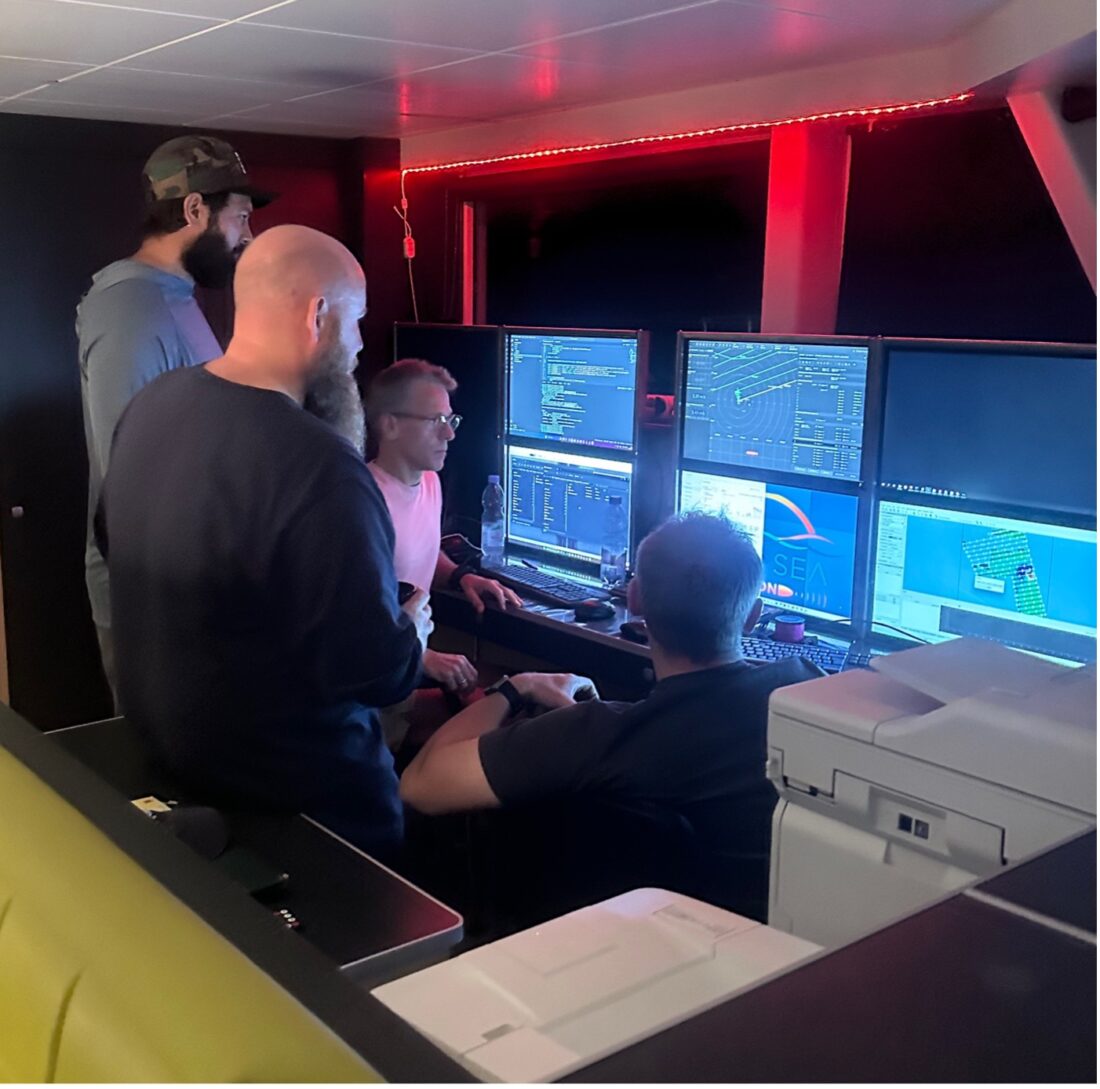
Earhart would certainly agree. What was it like out there on the mission?
Small boat, sixteen people crammed on, eating the same thing every day, no fruits or vegetables. The one thing we craved the most was chocolate. It was just all the things you would expect of a dorm room and all the dorm room sort of problems. The team got along great, but people start getting on each other’s nerves. There was seasickness. We saw a lot of cool stuff…flying fish, a pod of pilot whales. Being at sea for a hundred days, you get used to the rhythm of life out there.

Explain the technology you were using.
The sonar system we have is a Hugin 6000. It looks like a submarine, and you push it off the side of the ship, and it goes all the way to the bottom of the ocean. It’s not connected by cables or anything. It’s just got its own propeller on the back, and huge batteries. And then it just goes back and forth and mows the lawn, and it uses sound. It pings. It’s just like hitting a saucepan. It’s got sensors that listen, and from how that sound comes black, it will paint a picture of what it’s looking at.

So it’s down there echolocating like a bat.
Yep. Or like whales in the water.
Did you think you would find something on your first try?
I knew how much area we were covering and that we had a good shot at it. We captured [the image] on day thirty-two of the mission, but towards the end of the last day, we were cleaning our servers and seeing if it was actually still a drive that could work. I remember Craig, one of the guys, coming downstairs and saying “You guys have got to come up and take a look at this.” There was this urgency in his voice. So we all ran upstairs. And there it was on the screen. It was day ninety-something. We were all frustrated and tired, we’d been looking at screens for so long and there’s absolutely nothing down there, it’s just totally flat and sandy. And then all of a sudden, you see this. And I’m like, holy shit.
Be honest…are you worried somebody else is going to go and officially find it now?
No…we covered so much area. And we knew word was going to leak out that we found something very quickly. And this is a big discovery. This is Amelia Earhart. But it’s a big ocean. You need very special equipment. You need the right boat. It’s not something anybody can get together quickly, and we’ve been very careful about how we’re wording things. We made the decision to let the Wall Street Journal break the story, and to be very clear that we weren’t going to give very much information other than just the sonar image. So if somebody’s out there trying to piece all the clues together, they’re going to be misled. All I have to say to them is good luck. And we are ready to quickly get back out there.
And are you 100 percent convinced it is her aircraft?
I think you’d be hard-pressed to convince me it’s not her aircraft. I mean, there are not very many objects like that that look like a plane and have that distinctive tail in the back with twin vertical stabilizers. We feel very good about it.
So when you go back, you’ll go back to that spot. And what will you do?
We’re going to take pictures. Basically, we’ll drop a color camera down there, just like an iPhone camera. We’ll go around and take pictures, see how it’s sitting in the mud, if it’s right-side up or upside down, if it’s coming apart. We’ll look for the numbers on the top and bottom of the wing to confirm it is her aircraft. It was painted red. So we expect to see paint. At that depth in the ocean, things are very well preserved. Hopefully we can find out if the hatch is open above the cockpit…was she able to get out of the plane? Ultimately, we’d like to get into the cockpit and reverse engineer. What went wrong here? Why was she not able to communicate with the boat?
What’s the timeline on going back out?
I’d say sometime this year, end of this year, maybe early next year.
Of course there are people saying it isn’t her aircraft. How does that affect you?
Place your bets. That’s how I feel. Somebody pointed out that you don’t see the engines as much in the sonar image, and that’s a very valid point. And somebody may come up with another airplane that it could be. We don’t know of any airplane crashes near Howland, but you know how the internet works. We follow the science and we follow the evidence. We’re not attaching our egos or our personalities to this in a way that we have to make this one the plane. And if it’s not, we’re just going to keep searching.
What’s next after Amelia?
Well, this is a business, and we’ve been hired to do another job. But there’s some cool stuff in the Bermuda Triangle. Things disappear, and we know they’re there, but we don’t know where they are. It’s like going fishing with your son—you don’t know what’s going to bite. That’s the fun part of it, right? It could be a shark, it could be nothing. The oceans create these wonderful stories.


